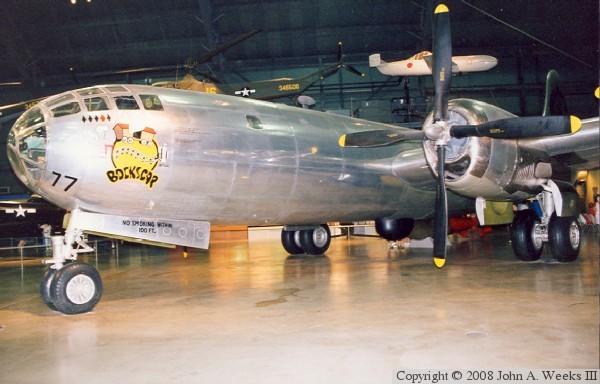Bockscar was built in Omaha, Nebraska, by the Martin Company. She was delivered to the US Army Air Force in March 1945. The Superfort flew the atomic bombing mission on August 9, 1945. After the war, Bockscar served briefly at Roswell, and then was sent to the boneyard in August 1946. The B-29 was made flight-ready in 1961, and flew to Dayton to join the USAF Museum later that year.
The first atomic bombing mission was more or less a milk run. It went very smoothly and was on time at each major checkpoint. In contrast, the crew who flew Bockscar on the second atomic bombing mission ran into a number of problems. Their primary target was overcast, and the secondary target was not much better. While they want to drop the bomb visually, after flying between targets, they decided to settle on a radar approach. At the last minute, a patch of sky opened, and the bomb was dropped visually. It missed the aim point by nearly a mile, which no doubt spared the lives of tens of thousands of Japanese people. After the bomb was away, fuel became a critical problem. Then a transfer pump failed, rendering some of their fuel load unusable. This made the trip to their abort site on Iwo Jima impossible. The only option was to divert to the recently captured airfield at Okinawa. Again, more problems prevented the crew from contacting the tower at Okinawa. The aircraft made a no-radio landing with virtually no fuel on board. Given the kamikaze activity in the area, Bockscar was lucky to not have been shot down when coming in without radio contact.

